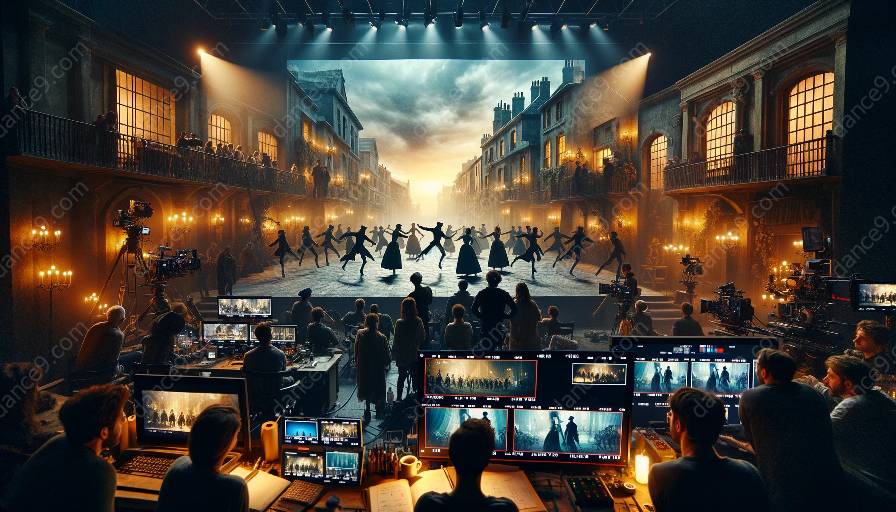Choreography for film and television is a unique and multi-faceted art form that combines the visual storytelling capabilities of film with the expressive and emotive power of dance. It involves the creation and arrangement of movements and sequences to enhance the narrative and emotional impact of a cinematic or televised production.
The Art of Balancing Storytelling and Dance
Effective choreography for film and television requires a delicate balance between storytelling and dance. It is essential for choreographers to seamlessly integrate dance into the narrative, ensuring that the movements and sequences complement the overall story without overshadowing it. This involves an in-depth understanding of the characters, plot, and themes of the production, as well as the visual language of film and television.
Choreographers must utilize dance as a means of enhancing the storytelling process, using movement to convey emotions, relationships, and character development. At the same time, they must ensure that the integrity of the dance as a standalone art form is maintained, allowing the choreography to shine independently while serving the narrative and visual aesthetics of the production.
Utilizing Movement to Convey Narrative and Emotion
In the realm of film and television choreography, movement serves as a powerful tool for storytelling, capable of conveying narratives and emotions that words alone cannot express. Choreographers must utilize movement to capture the essence of the story and the inner worlds of the characters, infusing the choreography with depth, meaning, and symbolism.
Through carefully crafted movements, gestures, and sequences, choreographers can communicate themes, conflicts, and resolutions, enriching the visual language of the production and resonating with audiences on an emotional level. Whether through intricate choreography in a dance scene or subtle, nuanced movements in a dramatic sequence, the art of storytelling through dance requires a meticulous understanding of the narrative context and the emotional journey of the characters.
The Collaborative Process in Choreography for Film & Television
Choreography for film and television is a collaborative process that involves close coordination with directors, cinematographers, and other key creatives. Choreographers must work hand-in-hand with the production team to ensure that the choreography aligns with the visual style, pacing, and overall artistic vision of the project.
Effective collaboration is essential for achieving a harmonious blend of storytelling and dance, as it allows choreographers to integrate their creative vision with the cinematic or televised medium, achieving a seamless and impactful integration of movement and narrative.
Conclusion
Balancing storytelling and dance in film and television choreography is a complex and captivating endeavor that demands creativity, artistry, and a deep understanding of both dance and visual storytelling. By marrying the emotive power of dance with the narrative depth of cinematic and televised productions, choreographers play a pivotal role in enhancing the overall impact and resonance of the storytelling experience for audiences.
The mastery lies in the ability to craft choreography that not only amplifies the storytelling but also stands as a compelling artistic expression in its own right, enriching the visual tapestry of film and television with the timeless language of movement.






































